Arts & Culture

We work hard for diplomas and degrees, and yet as Jes Kast reminds college graduates, no title is more important — or utterly unearned — than being beloved.

Director Anthony Mandler's movie Monster, focuses in on a myriad of social issues — race, class, mass incarceration, crime, and the U.S. penal system — but it also is a monster movie of sorts.
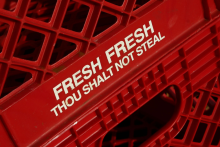
The stories I read this week on the internet reminded me of the Ten Commandments, so please indulge this loose paraphrase of Exodus 20.

UNTIL RECENTLY, I had a boss who kept CNN on all day in her office. I work in communications, so this made sense, but it made me wonder: How can we best consume the news? Does the news make us anxious and divide us? Or does it serve as a way to learn about the world and how we can better love and serve our neighbors? Though the evidence is mixed (we rarely have simple answers in life), Jeffrey Bilbro’s verdict on news consumption in Reading the Times is mostly negative.
Bilbro’s analysis suggests that modern media—understood broadly to include everything from newspapers to social media—divides our attention among trivia, binds us to the daily rather than allowing attention to the eternal, and diverts us from local, embodied concerns to national ones outside our scope of influence. His argument ranges broadly, integrating thinkers from Thoreau and Auerbach to the more modern Wendell Berry and Charles Taylor. The reader feels like they are in a college classroom, in a good way, with a professor who isn’t afraid to synthesize broadly to make their point.

Lorenzo was mortar for the church
he built, gathering wild birds
for the rafters and fruited trees
for their food. He carted stone
and hoisted, he pestled, he block-
and-tackled. Persecuted
by Valerian and about to be
arrested, Lorenzo goat-herded
the church’s wealth, distributed it
to the poor. He paid the unmade
orphans, clothed the lepers
in money. He sold the sacred
vessels, the varied trestles.
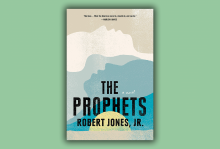
ON A MISSISSIPPI plantation known as “Empty,” two young enslaved people work and live in the barn, tending to the animals and each other. Despite opposing personalities, Isaiah and Samuel fit together: Where Isaiah is soft and accommodating, Samuel is hard and unyielding. As Samuel actively fights the system that seeks to bend him, Isaiah bends to survive, even as he mourns the name that was stolen from him. While Empty constantly seeks to erase their humanity, these young men find a quiet peace in their love, which touches the community around them.
In The Prophets, Robert Jones Jr. richly renders the perspectives of the enslaved and their enslavers, allowing for a complexity that a story with a single point of view would miss. The novel contains multitudes, among them a love story, an epic, an origin story, and a spiritual journey. This formidable debut weaves the ancestral past with the characters’ present to illuminate histories, realities, and possibilities that are just beyond reach. In his testament to Black queer love and storytelling, Jones confronts questions of gender, power, and consent in the wake of the transatlantic slave trade.
As the owner of Empty, Paul’s priority is to breed more slaves, and Isaiah and Samuel’s union poses a threat to these goals. In his own attempt at survival, the slave Amos proposes a solution: In exchange for “being learned in the ways of Christ, which meant being learned in ways forbidden by law,” he would preach to his fellow slaves and instill that “docility was treasured over rebellion.” For Amos, a glimpse of freedom means access to doors that have been closed to him. But for Amos to succeed, Samuel and Isaiah must give up their ability to choose who they can love.
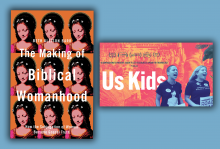
No More Death
In the 98-minute documentary Us Kids, survivors of the 2018 shooting at Marjory Stoneman Douglas High School in Parkland, Fla., organize the monumental March for Our Lives against gun violence while they honor their dead and take back democracy. Impact Partners.
Flesh Bears History
Natalie Wigg-Stevenson expands our theological imagination with Transgressive Devotion: Theology as Performance Art. Rooted in Baptist, Catholic, Anglican, feminist, and queer theological traditions, Wigg-Stevenson explores the emotional depths artists access by crossing boundaries in hopes of coming closer to God. SCM Press.
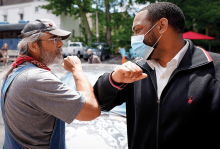
MY BELOVED ADOPTED state of Kentucky doesn’t rank number one in many things. In most measures of health, wealth, or education, we rank somewhere in the mid-40s. However, Louisville’s Courier-Journal recently unearthed a statistic in which Kentucky totally wrecked the curve—number of people per capita arrested for their actions during the Jan. 6 attack at the U.S. Capitol.
As of this writing, Kentucky’s number of apprehended insurrectionists equals that of neighboring Ohio, a state with almost three times our population.
I doubt that surprises many readers, but there’s another side to the Kentucky story that might: There are important voices in the state denouncing the riot—members of the African American community, which is mostly concentrated in our cities, but also members of our other left-out and left-behind community, the mostly white population of Appalachian eastern Kentucky. And there are even signs that some people among those two groups are reaching out to each other.

THE PROPHET JOB had a hard life, but I think even he, if listening to Abby’s story, would say, “Damn.”
He’s not listening to her troubles, though: Abby’s therapist is. No, wait, she’s not listening either, for a reason that will spur Abby’s friends to joke about just how sad Abby’s life really is.
I’m describing Work in Progress, a scripted comedy produced by Showtime and co-written by Tim Mason, Lilly Wachowski (The Matrix, Sense 8), and Abby McEnany, who stars as a fictionalized version of herself.
“Abby is a mid-forties self-identified queer dyke whose life is a quiet and ongoing crisis,” Showtime’s website describes, not revealing that Abby lives with OCD, washing her hands repeatedly and recording her life meticulously in notebooks, in case she forgets anything she’s ever done. It doesn’t reveal that Abby, throughout much of her life, has been called Pat—a reference to the Saturday Night Live character from the early ’90s—and is often mistaken for a man, asked to leave public bathrooms, and struggles with her weight. It certainly doesn’t reveal what we learn in the first few minutes of Work in Progress: In a couple of weeks, if Abby’s life doesn’t get better, she plans to take her own life.
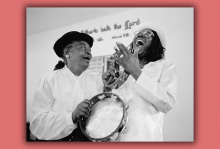
I'VE NEVER REALLY thought about what church ladies do when they’re not at church. My interactions with them have always been tied to the building and its activities. In pre-pandemic times, I would see them at service and maybe hug or shake hands, chat briefly, or just wave goodbye on my way out the door. But easy smiles and they’ve-got-it-together appearances belie the “less presentable” parts of everyone’s story, bits that, if shared, could create a space where we no longer feel isolated, but instead are comforted by the fact that each of us is trying to deal with at least one hot mess in our lives. The Secret Lives of Church Ladies by Deesha Philyaw unflinchingly tells the stories of a few of those messes, stories of the things that we hide.
Each narrative in the collection aches with a desire for connection, and Philyaw provides the reader a sometimes uncomfortably intimate view of how these “church ladies” try to meet this need. Some characters turn to intimate affairs, choosing partners with whom they can envision more or partners with whom there can never be more than fleeting and secret arrangements, sometimes due to the damage of homophobia. Other stories aren’t about romantic desires at all, but feature characters longing to connect with family, carrying a deep-seated, perpetual wish to simply be seen, valued, loved, and embraced for who they are by the people they thought could be expected to do so.
I particularly love that this collection features characters of diverse ages. I’m so tired of how not-entirely-subtle ageism has crept into various avenues of storytelling, as if all significant human experience, growth, and formation is wrapped up by the time you’re 40. Philyaw rejects this notion and delivers fully formed characters of all ages.
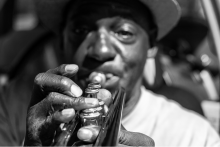
Two important promises I’ve made to myself: I will never again watch a video of a person being lynched by the police and I will not allow my writing to be used in a way that makes Black pain a spectacle.

If you’ve never had the opportunity to experience an Ethiopian meal, you are missing out. I have Ethiopian family members, so I frequently get to enjoy this cuisine. A regular meal for us could be something like doro wat, gomen, atkilt wat, and mesir wat. No meal is complete without a boona, or coffee, chaser. But as incredible as it is, coffee is not the defining trademark of Ethiopian cuisine. That distinction belongs solely to injera.

Isaac Simmons is right in the thick of it. Simmons, 23, is the first openly gay man certified for candidacy for ordination in the Illinois Great Rivers Conference of the United Methodist Church. And if that wasn’t enough of a barrier to break through, he’s not doing it alone. Instead, he’s bringing along Ms. Penny Cost — his drag persona.
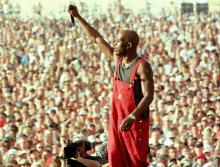
"[DMX] taught us how to channel our anger, our passion, our aggression but showed us all we were still human in it all," Steve Patton said.

Lil Nas X, Godzilla, and the (unofficial) patron saint of the internet.
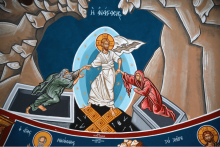
The fun of April Fools' Day certainly lost its shine amid the COVID-19 pandemic — as have surprises in general — but I hope they won’t be ruined forever.

Ten stories of passion, and how to channel it toward the liberation of all.

If we believe nature will mend,
it will replenish what has been taken and,
answering the wild call of urban space,
dolphins will return to Venetian canals,
elephants will drowsy dream in Chinese tea gardens,
humans will shed their fear and guilt to hope and taste
the terror of responsibility
the terroir of ourselves
the terra ignota of a paradise where
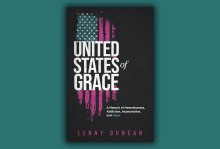
AMERICA IS THE crucible, the forge, the hammer beating me out of shape. Or into a new shape. But the fire is all God. A fire that is untamable, that has been harnessed and misused but not conquered by the powers that be. God’s mercy is the force that kept breath in my body as I tried to dash my life against the rocks. It’s Resurrection. Moments like that snowy day in Virginia, when the world conspired to drag me by my hair, kicking and screaming, toward life.
My life has followed a trajectory of grace: the specific route God used to reach me that was built through a series of actions and events piling up and creating a spiritual momentum that I couldn’t avoid, duck, or hide from.
The truth is nothing went perfectly to get me from where I was on Feb. 12, 2010, to where I am today, sitting in a random coffee shop in Bed-Stuy, Brooklyn, putting my story down in words for you, a stranger.
